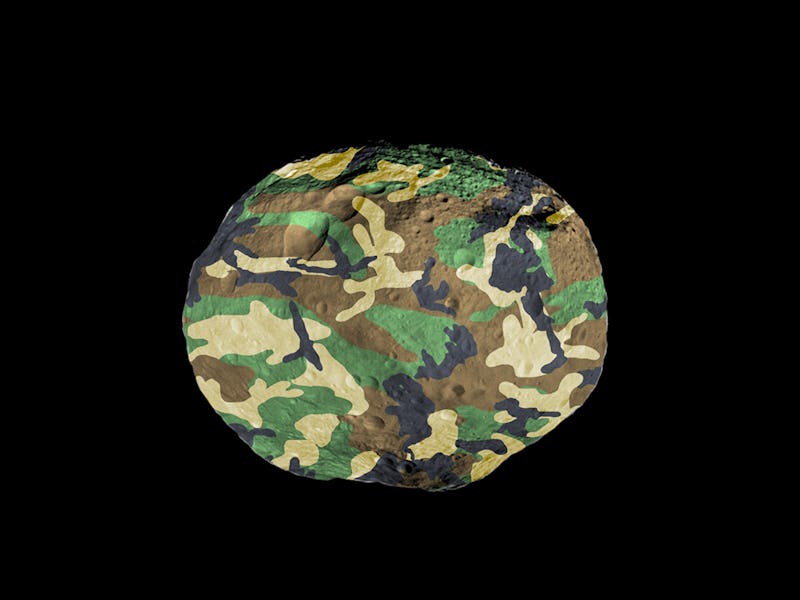There are so many asteroids floating around our solar system that it’s already hard to track and study them all, but now it turns out they might be camouflaging themselves. Which, yeah, sounds a little disconcerting.
It’s not that asteroids and dwarf planets are hiding themselves from our gaze entirely, but they could be obscuring what they really are. A team of astronomers at NASA’s Stratospheric Observatory for Infrared Astronomy were studying the dwarf planet Ceres — the largest object in the asteroid belt between Mars and Jupiter — when they found that it appearing disguising its true makeup under a thin layer of particles.
“We find that the outer few microns of the surface is partially coated with dry particles,” explained Franck Marchis, a senior planetary astronomer at the SETI Institute. “But they don’t come from Ceres itself. They’re debris from asteroid impacts that probably occurred tens of millions of years ago.”
Researchers analyzed Ceres’ spectral properties and found that much of its surface is covered in “fine particles of a dry silicate called pyroxene.”
Ceres — and presumably, other asteroids or dwarf planets like it — acquired this outer layer thanks to interplanetary dust particles, or IDPs, which get shot into space when asteroids collide. Objects floating in space gradually accumulate IDPs, forming an outer coating that makes them resemble their neighbors, even if that’s not what’s underneath. The Kinder Egg of asteroids, in other words.
Scientists say that Pluto’s moon Charon and Saturn’s moon Iapetus might also have camouflage coverings.
These newfound asteroid disguised deepens the mystery of these space objects. A mid-infrared observation of Ceres that went beyond the camouflaged surface detected ammoniated and watery clays, which suggests that Ceres might’ve formed in the outer reaches of the solar system — far away from its current location.
NASA has already put an increasing amount of effort into scouting and tracking near-Earth objects. Seeing through the veneer and understanding what these potential threats are really made of seems like a crucial part of that mission.
